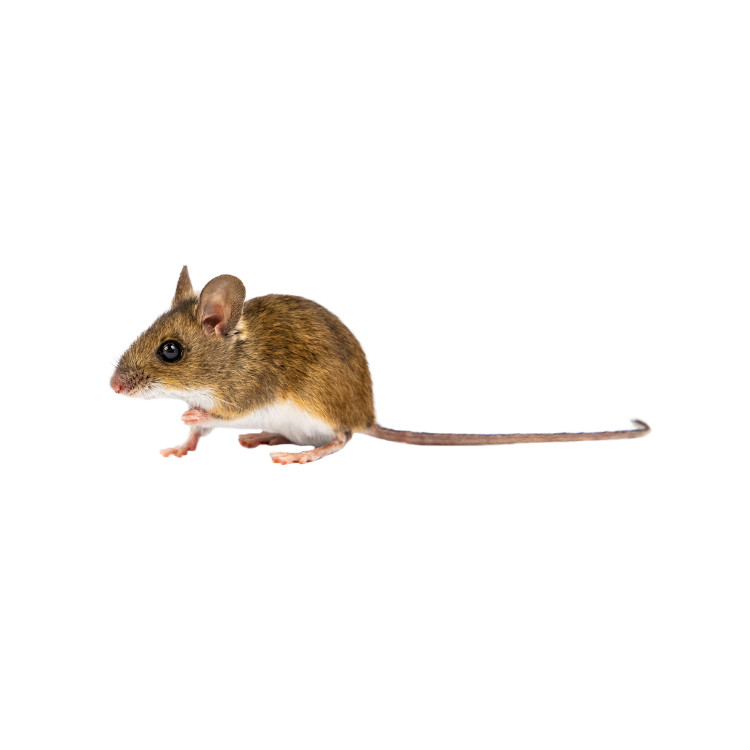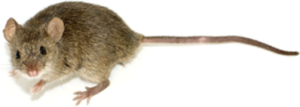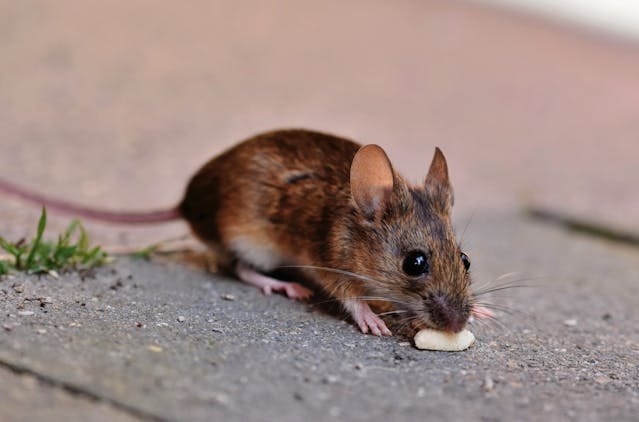House Mouse
House mice are common pests that can invade your home in search of food and shelter.

House mice are common pests that can invade your home in search of food and shelter.

Safe for the whole family
Over 10,000 pest-free homes
Year-round protection and availability
These small rodents typically have gray or light brown fur, large ears, and a long, thin tail.

Locale On Property
Mice can fit through spaces much smaller than they appear (think the size of a dime). Holes and cracks in your foundation and outer walls are prime entry points, as are doorways and areas around windows, chimneys, roof vents, garages and wherever pipes and wires enter your home…
Once inside, mice build nests in hidden areas near food sources. Homeowners may also find them living in attics, wall voids, under cabinets or inside crawl spaces.
Description
House mice are small, slender rodents with a slightly pointed nose; small, black, somewhat protruding eyes;
large, sparsely haired ears; and a nearly hairless tail with obvious scale rings. House mice are grey-brown with a grey or buff-coloured belly. Mice breed year round if they have access to food. They will reproduce every three months. 3-4 litters per year, 5 to 8 pups per litter.
Concerns
They can make you very sick. While the common house mouse is not as dangerous to your health as a deer mouse, they can still spread disease, such as hantavirus, salmonellosis and listeria through their urine, droppings, saliva and nesting materials.
Mouse feces and urine can dry and turn to dust, spreading viruses through the air we breathe.
Diseases that can be Spread from Mice to People
Lymphocytic choriomeningitis.
Pneumocystis carinii infection.
Ringworm.
Salmonellosis.
Streptobacillus moniliformis infection.
Tapeworms.
At Avayda, we know that you want a pest free home, regardless of the time of year. In order to do that, you need the right team and products to help remove invaders and keep them out for good. The problem is you’ve tried to solve it yourself, or you don’t have the time, and they keep coming back. Ultimately, you’re afraid they’ll never go away.
Everyone deserves a pest-free home. And we understand that your home has to be safe for you and your family. Free from any kind of insect, pest, or unwanted guest. We’ve helped create pest-free homes for 10,000+ customers, and we’re ready to help. We offer year-round pest services with safe products for the whole family and a guarantee that they’ll be out of your house for good.

Household mice are one of the most common and troublesome pests that invade homes across North America. These tiny rodents may seem harmless, but they can cause significant problems, from contaminating food to damaging property and spreading diseases.
If you’ve spotted signs of a household mouse in your home, it’s essential to take immediate action. In this guide, we’ll discuss effective mice control methods, the best mouse control solutions, and how to prevent future infestations.

Household mice are small and sneaky, making them difficult to spot. Look out for these common signs of a mouse infestation:
🔹 Droppings: Small, dark, rice-shaped droppings in pantries, under sinks, and along baseboards.
🔹 Gnaw Marks: Mice chew through food packaging, wires, and wooden furniture.
🔹
🔹 Grease Marks: Oily smudges along walls and baseboards where mice frequently travel.
🔹 Mouse Nests: Shredded paper, fabric, and insulation may indicate nesting activity.
If you notice any of these signs, immediate mouse control is necessary to prevent the infestation from worsening.
While a single mouse might not seem like a big deal, these rodents multiply quickly and can turn into a full-blown infestation in just a few weeks.
Food Contamination: Mice can spread bacteria such as Salmonella and E. coli by walking over countertops and food storage areas.
Property Damage: Household mice chew through wires, insulation, wood, and even drywall, creating fire hazards and structural issues.
Allergies & Disease Risk: Mice urine and droppings can trigger allergies, asthma, and even diseases such as Hantavirus.
Foul Odors: A strong, musty smell may indicate an active mouse infestation.
The longer mice remain in your home, the harder they are to remove. That’s why early detection and effective mice control strategies are crucial.
Eliminating mice from your home requires a multi-step approach to target their food sources, hiding places, and entry points.
Mice are constantly searching for food, so eliminating their food supply is the first step in effective mouse control.
By making food less accessible, you’ll discourage mice from staying inside your home.
Household mice can squeeze through holes as small as a dime, so sealing up potential entry points is critical.
Preventing entry is a long-term mice control strategy that keeps future infestations from occurring.
Using traps is one of the most effective ways to remove household mice.
Snap Traps: The traditional wooden traps that quickly and humanely kill mice.
Live Catch Traps: Traps that capture mice alive so they can be released far from your home.
Electronic Traps: Deliver a quick, high-voltage shock to eliminate mice instantly.
Glue Traps: Less effective but can be used in hard-to-reach areas.
Where to Place Traps:
For best results, use a combination of traps and bait to increase your chances of catching all the mice in your home.
If you’ve tried DIY solutions but are still dealing with an infestation, professional mice control services may be necessary.
Hiring a professional can save time and frustration, especially if the infestation is severe or recurring.
Once you’ve eliminated mice from your home, keep them from returning with these preventative tips:
By following these steps, you’ll protect your home from future mouse infestations.
A: The fastest way is to set multiple traps, seal entry points, and remove food sources to eliminate their survival needs.
A: Many repellents (such as ultrasonic devices) have mixed results. Traps and exclusion methods are more effective.
A: If you’re seeing frequent mouse activity or droppings in multiple areas, you likely have several mice in your home.
A: Small infestations can be resolved in 1–2 weeks with effective trapping, while larger infestations may require professional help.
A: Yes. Mice can spread diseases such as Salmonella, Hantavirus, and Lymphocytic Choriomeningitis Virus (LCMV). Always clean areas contaminated by mice carefully.
Dealing with a household mouse problem can be stressful, but with the right mice control strategies, you can get rid of them quickly and prevent them from coming back.
Seal entry points to keep mice out.
Use traps to eliminate existing infestations.
Remove food sources to make your home less attractive.
Consider professional mouse control if DIY methods fail.
If you’re struggling with a mouse infestation, Avayda Pest Control offers expert mouse control solutions to help you reclaim your home. Contact us today for a consultation!